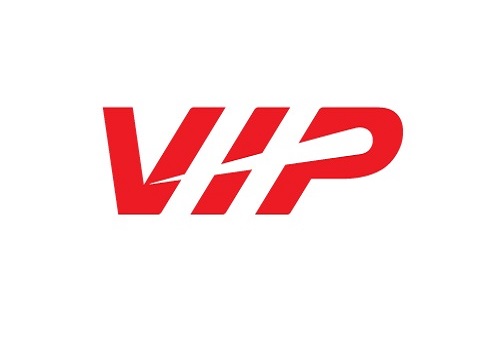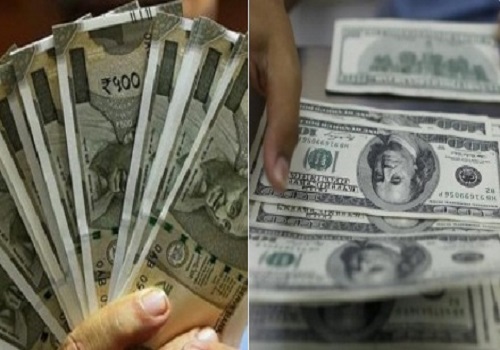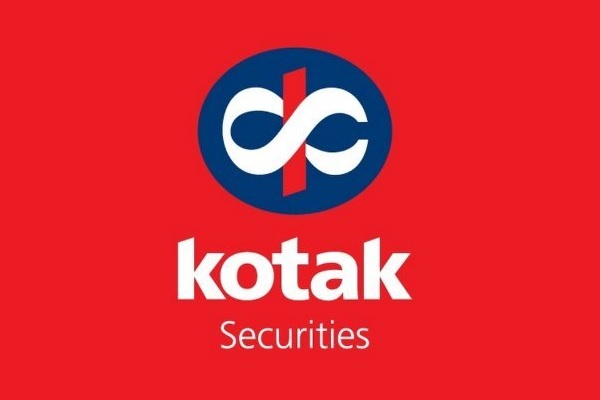Naturalgas trading range for the day is 309-363.2 - Kedia Advisory

Gold
Gold prices gained 0.41% to close at Rs.78,423 as safe-haven demand surged ahead of Donald Trump’s inauguration on January 20. Market participants remain cautious about the economic uncertainties surrounding Trump’s proposed policies. Comments from Federal Reserve officials further added to the cautious sentiment. Philadelphia Fed President Patrick Harker hinted at potential rate cuts, while Boston Fed President Susan Collins advocated a gradual policy approach due to significant economic uncertainty. Gold ETFs reported their first inflows in four years, with North American funds witnessing annual inflows after 2020, while European outflows narrowed. In India, gold discounts increased to $17 per ounce as high local prices curbed buying, contrasting with increased demand in China and other Asian markets for the Lunar New Year. Chinese premiums ranged from $2 to $9 per ounce, while premiums in Singapore and Hong Kong varied between par levels to $2.50 and $0.30 discount to $2, respectively. Central banks continued robust gold purchases in November, with the National Bank of Poland leading with an addition of 21 tonnes, reaching 448 tonnes in reserves. India added 8 tonnes in November, bringing its year-to-date total to 73 tonnes and reserves to 876 tonnes, ranking it as the second-largest buyer in 2024. China’s central bank resumed purchases, increasing reserves to 73.29 million fine troy ounces by December. The market experienced short covering with open interest dropping by 2.11% to 11,177. Gold finds support at Rs.78,065, with the next level at Rs.77,700. Resistance is seen at Rs.78,795, and a breach could target Rs.79,160.
Trading Ideas:
* Gold trading range for the day is 77700-79160.
* Gold gains due to safe-haven buying ahead of January 20, the day Donald Trump takes office.
* WGC reported that physically-backed gold ETFs recorded their first inflows in four years, driven by demand in Asia.
* Gold discounts in India rose as consumers refrained from buying as local prices hit a month's high.
Silver
Silver prices rose by 0.87% to close at Rs.92,506, supported by safe-haven demand due to uncertainties around President-elect Donald Trump’s policies. The U.S. economy added 256,000 jobs in December 2024, surpassing forecasts of 160,000 and marking the highest gain in nine months. However, Federal Reserve officials remain cautious, with Governor Michelle Bowman indicating that December’s rate cut could be the final step, and Kansas City Fed President Jeff Schmid suggesting reluctance for further easing amid persistent inflation and economic resilience. On the global supply-demand front, the silver market continues to face a structural deficit for the fourth consecutive year. The Silver Institute projects a 4% decline in the deficit to 182 million ounces in 2024, as a 2% rise in supply offsets a 1% increase in demand. Record industrial demand, including applications in electronics, electric vehicles, and solar panels, is expected to push total demand to 1.21 billion ounces despite a 16% drop in physical investment. Mine supply is forecast to grow by 1%, led by production increases in Mexico, Chile, and the U.S., while recycling is set to rise by 5% due to higher scrap collection. The market witnessed short covering, with open interest declining by 10.19% to settle at 20,689. Silver prices find support at Rs.91,045, with the next level at Rs.89,590. Resistance is pegged at Rs.93,800, and a break above this could see prices testing Rs.95,100.
Trading Ideas:
* Silver trading range for the day is 89590-95100.
* Silver rose driven by safe-haven demand amid uncertainties over President-elect Donald Trump's policies.
* The US economy added 256K jobs in December 2024, the most in nine months, following a downwardly revised 212K in November.
* Fed’s Bowman said she supported the recent interest rate cuts but the December reduction should be the "final step" in the easing process.
Crude Oil
Crude oil prices jumped 3.2% to settle at Rs.6,576, driven by supply concerns and falling U.S. inventories. Signs of potential shortages due to sanctions on Iranian and Russian crude exports, coupled with falling U.S. stockpiles, provided significant upward momentum. The Energy Information Administration (EIA) reported a 959,000-barrel draw in crude inventories to 414.6 million barrels in the week ending January 3, well above market expectations for a 184,000-barrel drop. Stocks at the key Cushing, Oklahoma, delivery hub fell by 2.5 million barrels, while refinery utilization rates increased to 93.3%.Demand prospects also improved with cold weather across the U.S. reducing inventories and boosting heating fuel requirements. U.S. oil production hit a record 13.46 million barrels per day (bpd) in October, reflecting a 260,000 bpd month-over-month increase, while overall product demand surged to 21.01 million bpd, the highest since August 2019. Demand for distillate fuel oil, including diesel and heating oil, rose 347,000 bpd in October to a yearly high of 4.06 million bpd. However, concerns about China’s weaker-than-expected demand growth persist, tempering bullish sentiment. Meanwhile, U.S. policies under President-elect Donald Trump, including sanctions and potential tariffs on Canadian imports, add uncertainty to future supply dynamics. The market experienced fresh buying with a 52.32% surge in open interest to 15,361 contracts. Crude oil finds support at Rs.6,389, with the next level at Rs.6,203. Resistance is seen at Rs.6,735, and a break above could lead to testing Rs.6,895.
Trading Ideas:
* Crudeoil trading range for the day is 6203-6895.
* Crude oil climbed amid signs of falling U.S. stockpiles and potential supply shortage due to the sanctions on Iranian.
* Prices were also supported by optimism around increased fuel demand from icy conditions in the U.S. and Europe.
* US Treasury to impose sanctions on 180 crude oil and fuel vessels transporting Russian oil and dozens of oil traders.
Natural Gas
Natural gas prices surged by 5.12% to settle at Rs.342.7, driven by forecasts of colder weather and increased heating demand through January 25. Higher gas flows to liquefied natural gas (LNG) export plants also boosted the market. Despite freezing conditions, freeze-off impacts on output appear to be leveling, with January production averaging 102.6 billion cubic feet per day (bcfd), down from 103.8 bcfd in December but less severe compared to past winters. Storage withdrawals totaled 40 billion cubic feet (bcf) in the week ending January 3, below expectations of a 51 bcf draw, reducing total inventories to 3,373 bcf. This marked the eighth consecutive weekly draw, narrowing the surplus over the five-year average to 6.5% and pushing stocks 0.1% below last year’s levels. The Midwest and East regions saw the largest storage declines due to colder weather. The U.S. Energy Information Administration (EIA) forecasts a decline in natural gas production to 103.2 bcfd in 2024, down from 103.8 bcfd in 2023, while consumption is projected to rise to a record 90.5 bcfd. In contrast, Russia’s Gazprom expects gas production to recover to 416 bcm, with exports to China increasing to 31 bcm. The market witnessed fresh buying as open interest rose by 29.44% to 14,409 contracts. Natural gas finds support at Rs.325.8, with the next level at Rs.309. Resistance is likely at Rs.352.9, and a break above could push prices to Rs.363.2.
Trading Ideas:
* Naturalgas trading range for the day is 309-363.2.
* Natural gas climbed on forecasts for colder weather and higher heating demand
* US gas storage withdrawals could hit monthly record high in Jan
* Even colder weather still to come over next two weeks
Copper
Copper prices inched up by 0.12%, settling at Rs.826, as market participants weighed the potential impact of U.S. import tariffs under the incoming administration. On COMEX, copper prices reached $4.285 per lb ($9,446.82 per metric ton), marking their highest levels since November 11. The COMEX-LME copper premium widened to $400 per ton, reflecting growing uncertainty around trade policies, particularly the threat of a 60% tariff on Chinese copper exports. Traders have reacted by increasing shipments to the U.S., boosting CME warehouse stocks to a six-year high of 96,384 tons, a 10% rise since late November. Chile remains the dominant source of U.S. refined copper imports, accounting for 66% (511,000 tons), while Mexico and Canada contributed 19% (142,000 tons) last year. Globally, the copper market showed a 41,000 metric tons deficit in October, narrowing from 136,000 tons in September, with a year-to-date surplus of 287,000 tons, per the ICSG. China’s copper imports hit a one-year high in November at 528,000 tons, up 4.3% from October, driven by restocking and shipments from Africa. For the first 11 months, unwrought copper imports rose by 1.7% year-on-year, while copper concentrate imports grew by 2.2%.Copper is experiencing short covering, with a 7.67% drop in open interest to 5,319 contracts. Support is seen at Rs.823.1, with a potential test of Rs.820 if breached. Resistance is pegged at Rs.829.5, and a breakout could target Rs.832.8.
Trading Ideas:
* Copper trading range for the day is 820-832.8.
* Copper prices soared as the market attempted to discount the potential for hefty tariffs on U.S. imports.
* Climbing copper prices on COMEX have widened the premium against LME to around $400 a ton from near zero at the start of 2025.
* Shanghai warehouse copper stocks down 5.4%
Zinc
Zinc prices increased by 0.55%, settling at Rs.273.05, as market sentiment improved on expectations of China’s enhanced monetary and fiscal measures to bolster economic growth. This optimism partially offset uncertainties surrounding U.S. President-elect Donald Trump’s tariff threats, which continue to loom over commodity markets. Zinc inventories monitored by the Shanghai Futures Exchange fell sharply, down 20.9% from last Friday, providing further support to prices. On the production side, domestic refined zinc output in December 2024 is expected to rise by over 20,000 metric tons month-on-month (5%), despite a cumulative annual decrease of more than 6%. Notably, production exceeded expectations in regions like Qinghai, Inner Mongolia, Xinjiang, Hunan, and Shaanxi. Global zinc market dynamics remain tight, with the deficit expanding to 69,100 metric tons in October from 47,000 tons in September, according to the ILZSG. However, the first ten months of 2024 still recorded a surplus of 19,000 tons, significantly lower than last year’s surplus of 356,000 tons. Declining mine output in key regions like Canada, China, South Africa, and Peru drove a 3.8% decrease in global zinc production in January-October. Zinc is witnessing short covering, with a significant drop in open interest by 14.01% to 2,768 contracts, while prices increased by Rs.1.5. Support is seen at Rs.271.5, with further downside potential to Rs.270. Resistance is pegged at Rs.274.7, and a breakout could push prices to Rs.276.4.
Trading Ideas:
* Zinc trading range for the day is 270-276.4.
* Zinc gains as markets remain optimistic that Beijing will follow through on stimulus to support economic growth.
* However, ongoing uncertainties surrounding US President-elect Donald Trump’s tariff threats continue to pose risks to prices.
* Zinc inventories in warehouses monitored by the Shanghai Futures Exchange down 20.9% from last Friday.
Aluminium
Aluminium prices gained 1.09%, settling at Rs.245.05, supported by a sharp decline in London Metal Exchange (LME) warehouse stocks, which dropped by 16% to 244,225 metric tons, marking the lowest levels since May. Notably, on-warrant aluminium stocks fell further as 45,050 tons were earmarked for delivery from warehouses in Port Klang, Malaysia. The LME data also revealed that 61% of the total stocks, equivalent to 380,050 metric tons, were canceled warrants, signaling tight near-term supply. On the global front, refined aluminium production in October reached 6.0856 million tons, while consumption stood at 6.1259 million tons, leading to a supply deficit of 40,300 tons. For the first ten months of 2024, cumulative production totaled 59.65 million tons, falling short of consumption at 59.98 million tons, resulting in a deficit of 332,600 tons. In China, aluminium production in December grew by 4.13% year-on-year, driven by higher output despite production cuts in Sichuan and Guangxi due to high costs and technological upgrades. Additionally, China’s aluminium exports surged by 17% year-on-year, reaching 5.5 million tons in the first ten months of 2024. Aluminium is experiencing short covering, reflected by a significant drop in open interest by 14.29% to 2,796 contracts, while prices rose by Rs.2.65. Immediate support is at Rs.243.5, with further downside to Rs.241.8. Resistance is expected at Rs.246.4, and a breakout could push prices to Rs.247.6.
Trading Ideas:
* Aluminium trading range for the day is 241.8-247.6.
* Aluminium gains as available stocks in LME warehouses fell to the lowest since May.
* LME data shows overall cancelled aluminium warrants at 380,050 metric tons, or 61% of the total stocks.
* Global primary aluminum production is growing steadily.
Cottoncandy
Cottoncandy prices rose by 0.2% to Rs.54,700, driven by increasing demand from garment industries and robust export orders. Cotton yarn prices in southern India also saw an uptick, reflecting the bullish sentiment. However, a 43% decline in kapas arrivals in Punjab, Haryana, and Rajasthan by November 30 compared to last year has raised concerns of raw material shortages across the supply chain. Farmers are reportedly holding back produce, anticipating higher prices, further tightening supplies. Global cotton production for 2024-25 is forecast to rise by 1.2 million bales to 117.4 million, supported by higher outputs in India and Argentina. Yet, domestic cotton imports for the current crop year are estimated at 25 lakh bales, up 9.8 lakh bales from last year, reflecting supply gaps. By November 30, Indian ports received around 9 lakh bales. The projected closing stock for 2024-25 is 26.44 lakh bales, significantly lower than the 30.19 lakh bales from the previous year, underscoring supply constraints. On the global front, U.S. cotton production was revised higher to 14.3 million bales, while world production estimates also saw a 1.2 million bale increase due to larger crops in India, Argentina, and Brazil. However, consumption is rising, particularly in India, Pakistan, and Vietnam, driving a marginal increase in global trade. The market witnessed fresh buying with a 0.47% increase in open interest, settling at 424 contracts as prices gained Rs.110. Cottoncandy finds support at Rs.54,580, with further downside testing at Rs.54,450. Resistance is seen at Rs.54,860, and a breakout above could push prices to Rs.55,010.
Trading Ideas:
* Cottoncandy trading range for the day is 54450-55010.
* Cotton gains as cotton yarn prices increased due to rising demand from garment industries and strong export orders.
* India's cotton production in 2024/25 is likely to fall by 7.4% from a year ago
* Cotton production is projected to increase in China, Brazil, and Argentina, more than offsetting reductions in the US and Spain – USDA
* In Rajkot, a major spot market, the price ended at 25935.7 Rupees dropped by -0.18 percent.
Turmeric
Turmeric futures fell by 0.18%, closing at 15,172, as reports of good-to-excellent crop conditions and increased sowing activity weighed on market sentiment. Despite minimal weather disruptions, the downside was capped by limited supplies until the arrival of the new crop. Daily turmeric arrivals increased to 9,030 bags, up from 7,965 in the previous session, although market stock levels remain low. Sowing on the Erode line has reportedly doubled compared to last year, while acreage in Maharashtra, Telangana, and Andhra Pradesh is estimated to be 30-35% higher. Nationally, turmeric sowing has risen to an estimated 3.75–4 lakh hectares in 2024, up from 3–3.25 lakh hectares last year. Despite higher acreage, prolonged rains have delayed harvesting, potentially impacting fresh supply timelines. On the trade front, turmeric exports rose 6.57% year-on-year to 108,880 tonnes between April and October 2024. October exports surged 57.22% compared to the same month in 2023. However, imports during the same period jumped 118.99% to 17,692 tonnes, reflecting strong domestic demand but a notable October year-on-year import decline of 23.53%. The market experienced fresh selling with a 1.27% increase in open interest, settling at 11,530 contracts. Support is seen at 15,060, with a break potentially leading to 14,948. Resistance is likely at 15,314, and a breach above could push prices to 15,456.
Trading Ideas:
* Turmeric trading range for the day is 14948-15456.
* Turmeric dropped as turmeric crop is reported to be in good to excellent condition.
* However downside seen limited amid reports of low supplies till the arrival of new crop.
* In Indonesia, dry weather has accelerated harvesting, which is currently at peak levels.
* In Nizamabad, a major spot market, the price ended at 14123.35 Rupees dropped by -0.54 percent.
Jeera
Jeera futures declined by 0.13% to close at 23,330 on profit booking after recent gains driven by delayed sowing in Gujarat and Rajasthan. Higher temperatures have disrupted seeding and germination, with Gujarat, the largest jeera producer, reporting sowing in only 57,915 hectares by November 25, significantly lower than the previous year’s 2.44 lakh hectares. This represents just 15% of the normal 3.81 lakh hectares of cropping area, as per state agriculture department data. Sowing delays of 20-25 days are expected to impact crop availability. India’s cumin production increased to 8.6 lakh tonnes in 2023-24 from 5.77 lakh tonnes the previous year, but production is expected to decline by 10% this year due to reduced cultivation. Rajasthan’s cumin acreage is also forecasted to drop by 10-15%. On the global front, Indian cumin remains the cheapest, priced at $3,050 per tonne, significantly lower than Chinese cumin by $200-$250, making India a preferred sourcing destination for countries like China. Jeera exports rose 77.37% year-on-year to 135,450.64 tonnes during April-October 2024, with October exports surging 161.04% compared to the same month in 2023. Strong domestic and international demand, especially from Europe, coupled with Middle East tensions, has bolstered export performance. The market witnessed fresh selling as open interest rose by 5.08% to settle at 2,232 contracts. Support is at 23,170, with a break below testing 23,000 levels. Resistance is seen at 23,440, and a move above could push prices toward 23,540.
Trading Ideas:
* Jeera trading range for the day is 23000-23540.
* Jeera dropped on profit booking after prices gained as sowing has been delayed
* Higher day temperatures in the past few weeks has impacted the seeding of jeera and has also led to poor germination in various places.
* Jeera exports during Apr-Oct 2024, rose by 77.37 percent at 135,450.64 tonnes as compared to Apr-Oct 2023.
* In Unjha, a major spot market, the price ended at 23992.85 Rupees dropped by -0.4 percent.
Views express by all participants are for information & academic purpose only. Kindly read disclaimer before referring below views





















